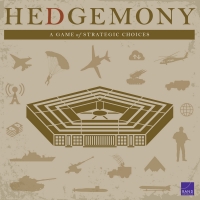
U.S. defense strategists and policymakers have the perennial challenge of developing capstone documents that can coherently articulate and guide how the U.S. Department of Defense will deliver and maintain combat-credible military forces to deter war and provide national security in alignment with national strategy. These forces must be ready to fight and prevail should deterrence fail against a variety of threats in an evolving and uncertain global security environment, and they must be able to do this with acceptable risks — both in the present against today's threats and in the future against threats that might emerge. Key audiences for these capstone documents include defense planners, programmers, budgeters, managers, analysts, and policymakers who support the development and management of forces that can be postured and employed in alignment with a given defense strategy to accomplish objectives.
Against this backdrop, RAND researchers developed Hedgemony, a wargame designed to teach U.S. defense professionals how different strategies could affect key planning factors in the trade space at the intersection of force development, force management, force posture, and force employment. The game presents players, representing the United States and its key strategic partners and competitors, with a global situation, competing national incentives, constraints, and objectives; a set of military forces with defined capacities and capabilities; and a pool of periodically renewable resources. The players are asked to outline their strategies and are then challenged to make difficult choices by managing the allocation of resources and forces in alignment with their strategies to accomplish their objectives within resource and time constraints.
A short video featuring interviews with U.S. defense professionals that played Hedgemony and the RAND researchers that developed it is available here.
No comments:
Post a Comment